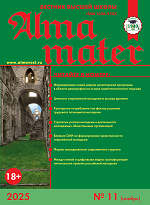In domestic higher education, there is a problem of aging teaching staff, which raises discussions about the need for a special personnel policy to rejuvenate the staff. The paper examines issues of compatibility between the activities of an elderly university teacher and the realities of our time, and also considers possible ways to take into account the aging process when forming teaching staff. The methodological basis of the study was the analysis of scientific publications and generalized practical experience in studying the influence of a teacher’s age on the effectiveness of his activities. The empirical base was official statistics. In the course of the work, the following aspects were considered: the process of aging of the teaching staff; features of the health status of older teachers. A comparison was made between older and younger teachers. It is shown that, along with certain disadvantages, older teachers have a number of advantages over their younger colleagues. Possible ways to take into account the aging process when forming teaching staff are analyzed. Based on the analysis, conclusions and recommendations are formulated. In particular, it is shown that the existing methodology for regular competitive selection of teachers, taking into account the results of their activities over the past period, is quite well developed and does not require the use of special measures to “rejuvenate” the teaching staff.
Keywords: teaching staff, age, aging, elderly teacher, generational change, formation of teaching staff, university
References
1. Surovitskaya, G.V. Mechanisms for the development of human resources at flagship universities in Russia. University management: practice and analysis [Universitetskoye upravleniye: praktika i analiz]. 2019. Vol. 23. No. 1-2. P. 72–80.
2. Pugach, V.F. Once again about the age of teachers in Russian universities: old problems and new trends. Higher education in Russia [Vyssheye obrazovaniye v Rossii]. 2023. Vol. 32. No. 3. P. 118–133. DOI: 10.31992/0869-3617-2023-32-3-118-133
3. Bayanova, A.R. Organizational and pedagogical conditions for the development of competitiveness of a higher school teacher. Vestnik of ChSPU named after I.Ya. Yakovlev [Vestnik CHGPU im. I.YA. Yakovleva]. 2020. No. 3 (108). P. 159–165.
4. Kassal, B.Yu. Activities of an elderly university teacher and the realities of our time. National priorities of Russia [Natsional'nyye prioritety Rossii]. 2021. No. 2 (41). P. 70–79.
5. Tnimova, G.T. Studying the motivation for professional activities of university teachers in age and gender aspects. Human health, theory and methodology of physical culture and sports [Zdorov’ye cheloveka, teoriya i metodika fizicheskoy kul’tury i sporta]. 2020. No. 2 (18). P. 29–33.
6. Ilyina, I.Yu. Age dynamics of the teaching staff of higher education: current trends and assessment of prospects. Vestnik of NSUEU [Vestnik NGUEU]. 2022. No. 3. P. 128–139. DOI: 10.34020/2073-6495-2022-3-128-139.
7. Bondarenko, N.V., Varlamova, T.A., Gokhberg, L.M. et al. Education indicators: 2024 Statistical collection. Moscow: ISSEK HSE, 2024. 416 p.
8. Official website of Rosstat. Results of VPN-2020. Vol. 10. Labor force. URL: https://rosstat.gov.ru/vpn/2020/Tom10_Rabochaya_sila. Table 7. Employed population of private households by gender, age groups and employment status. (accessed on: 10.06.2024).
9. Gelman, V.Ya., Tikhomirova, A.A. Problems of the department of information technology in a medical university. Education and science [Obrazovaniye i Nauka]. 2017. No. 5 (19). P. 153–165. DOI: 10.17853/1994-5639-2017-5-153-165.
10. Reinhart, R.M.G., Nguyen, J.A. Working memory revived in older adults by synchronizing rhythmic brain circuits. Nature Neuroscience. 2019. Vol. 22. No. 5. P. 820–827. DOI: 10.1038/s41593-019-0371-x.
11. Novoselova, E.N. Health in old age: stereotypes and objective indicators. Vestnik of Moscow University. Series 18. Sociology and political science [Vestnik Moskovskogo universiteta. Seriya 18. Sotsiologiya i politologiya]. 2024. Vol. 30. No. 1. P. 32–52.
12. Ilyina, I.Yu. Age as a factor of differentiation of behavioral strategies of university teachers in the professional labor market. Economics of Education [Ekonomika obrazovaniya]. 2019. No. 6. P. 36–46.
13. Gelman, V.Ya. On trends in the formation of basic knowledge among students. Alma mater (Vestnik vysshey shkoly). 2020. No. 8. P. 23–27. DOI: 10.20339/AM.08-20.023
14. Aging and health. 2022. WHO official website. URL: https://www.who.int/ru/news-room/fact-sheets/detail/ageing-and-health (accessed on: 10.06.2024).
15. Active aging index. Analytical report. 2019. URL: https://unece.org/info/publications/pub/2804 (accessed on: 10.06.2024).












.png)






